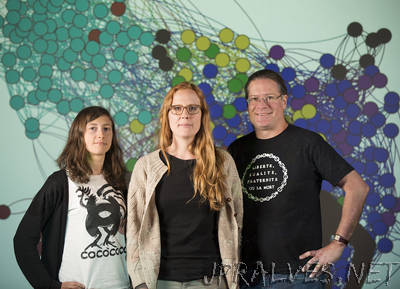
“Sophisticated network analysis means finding relationships that often aren’t easy to see. A network may have many layers — corresponding to different types of relationships in a social network, for example — but traditional approaches to analysis are limited. They tend to flatten networks into single layers, or treat layers independently of the others. A new algorithm from an interdisciplinary team at SFI identifies relationships not only within individual layers, but also across multiple layers. It’s the product of a recent project involving an anthropologist, a mathematician, a physicist, and a computer scientist. SFI Omidyar Fellow Eleanor Power, the anthropologist, says the model is broadly applicable to a variety of network types. “It can also predict missing information,” says SFI Postdoctoral Fellow Caterina De Bacco, the physicist of the group. Power and De Bacco collaborated with SFI Omidyar Fellow Daniel B. Larremore, a mathematician, and SFI Professor Cristopher Moore, a computer scientist and polymath. The group published their work April 24 in the journal Physical Review E. They tested the model on two datasets. The first came from Power, who spent two years collecting data on social networks in two villages in rural India. In her work, layers correspond to relationships like friends, babysitters, or people who would loan money to each other. The model successfully predicted missing connections in her data both within and between layers.”
